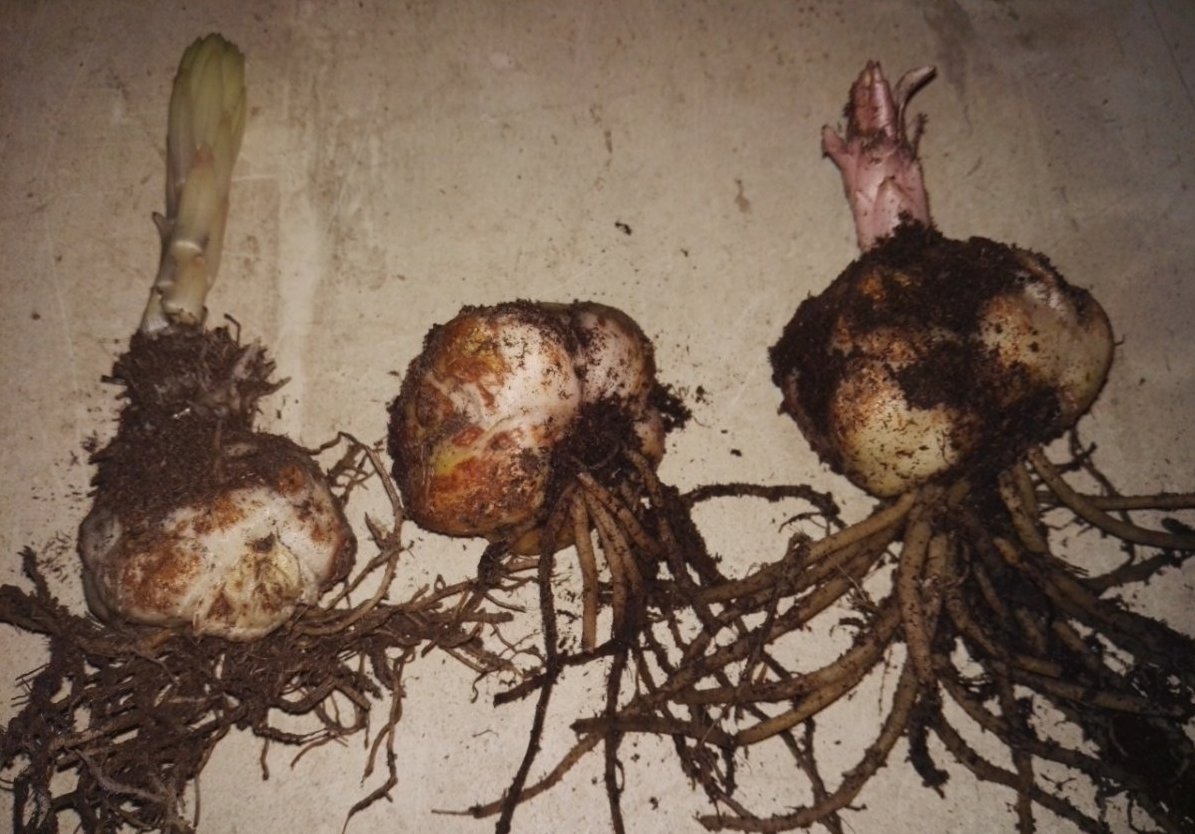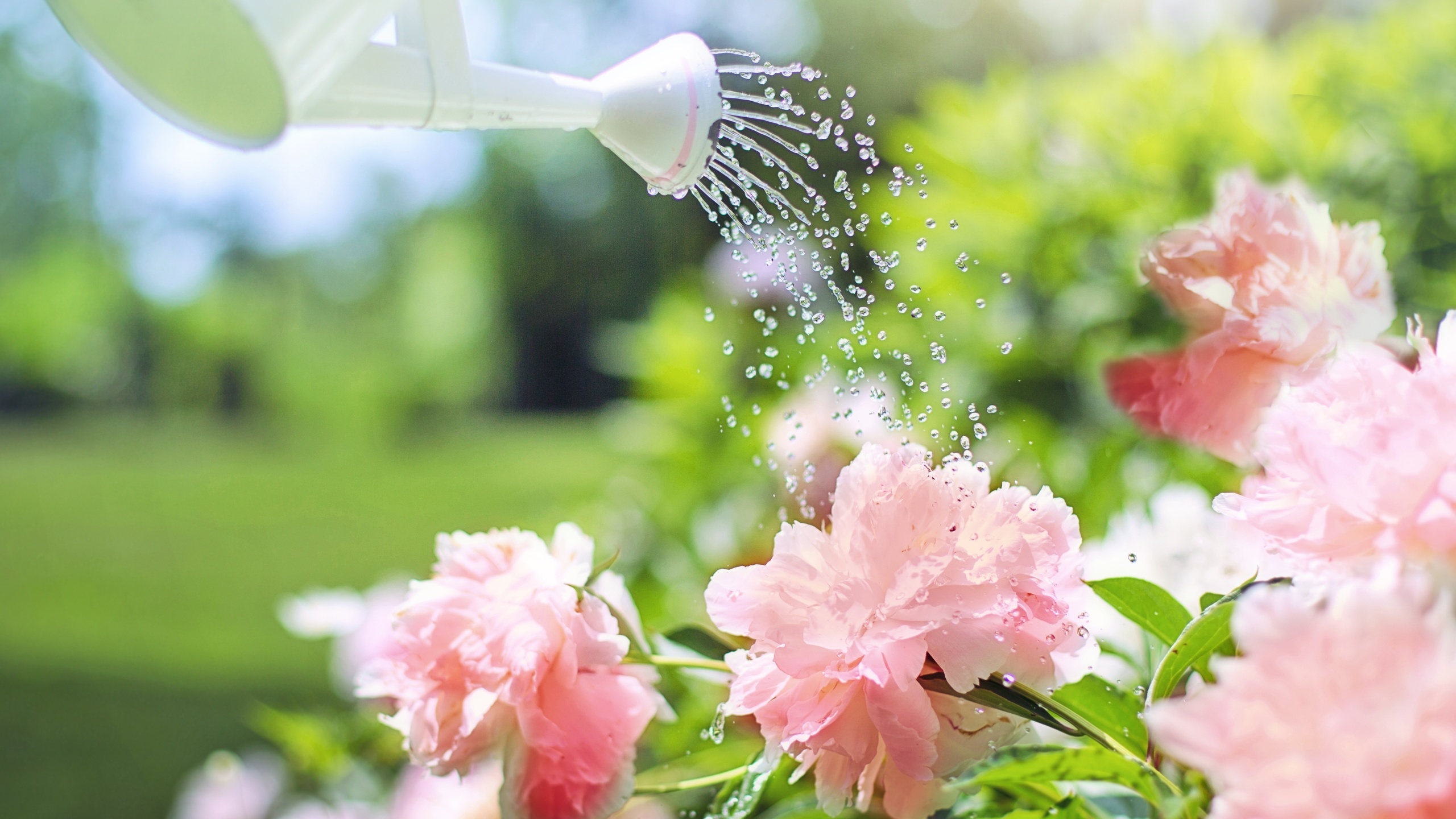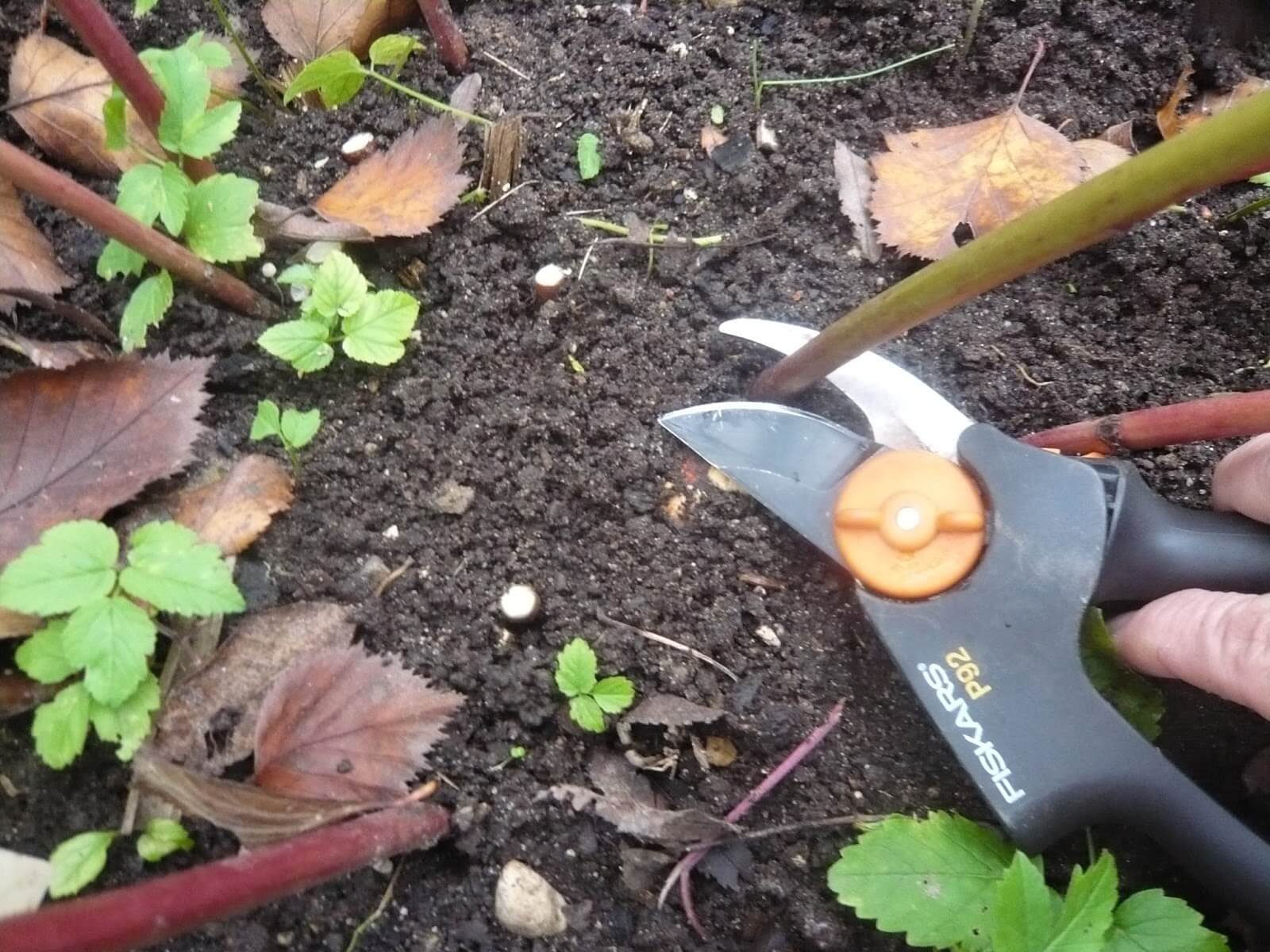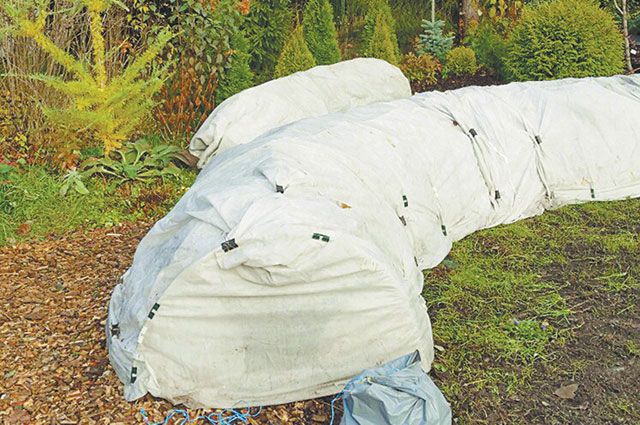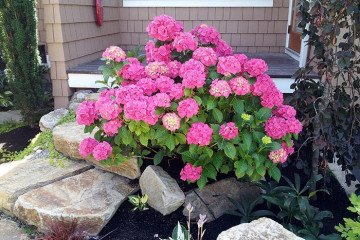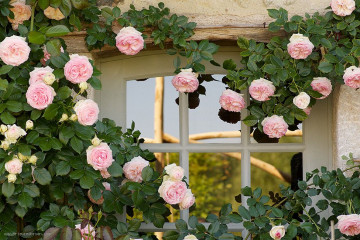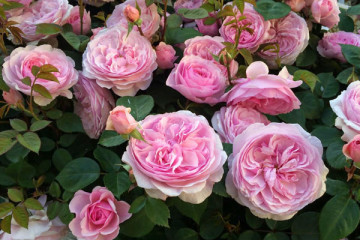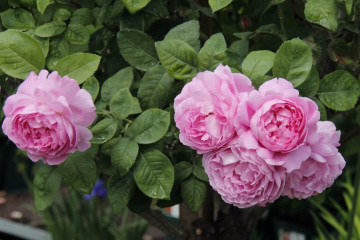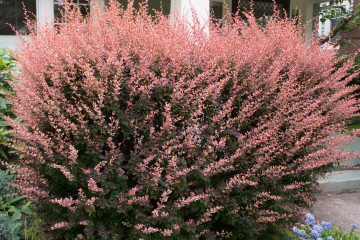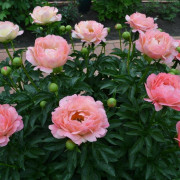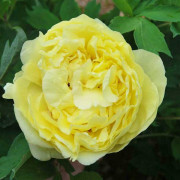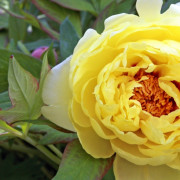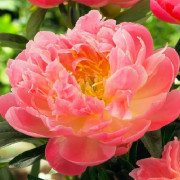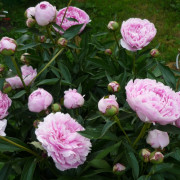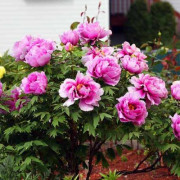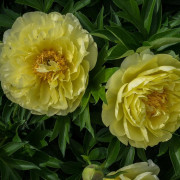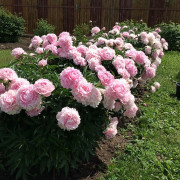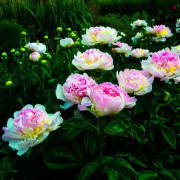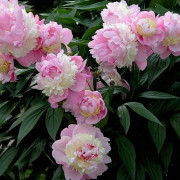Peony Julia Rose (Paeonia Itoh Julia Rose)
Content:
Peonies are some of the most beautiful garden flowers used to create landscaping. Thanks to their unpretentious care and their bright appearance, they are gaining popularity among gardeners of the country every year. Breeders very often develop new varieties, and one of them is Peony Julia Rose.
Hybrid Paeonia Itoh Julia Rose - description of the variety, history of creation
Ito is a hybrid variety of peonies. She appeared quite recently and is still little known to a wide circle of flower growers. The culture was created in 1958 in Japan by breeder Ito Toichi from Tokyo. He crossed herbaceous and tree-like peonies, resulting in a perennial with bright yellow buds. After a while, they became interested in these hybrids in the United States, and there they began to work on the creation of new intersectional varieties. As a result, they were brought into a separate group named after their creator.
Short description
The plant has a strong sturdy stem, which can reach a height of 1 m. The feathery leaves grow on the stems in large numbers and have a dark green tint. Rose Julia blooms from late May to early July. The blossoming buds have a pale pink hue and can reach a diameter of 20 cm.
Advantages and disadvantages of the variety
The virtues of culture:
- has high frost resistance;
- has excellent decorative effect;
- used to create bouquets;
- is immune to most diseases.
Also, the culture has disadvantages:
- weak aroma;
- short flowering times;
- high price.
Use in landscape design
Lush flowers look good when planted alone on the site, but experienced gardeners create wonderful combined compositions with their help. Ornamental deciduous plants are best suited for this. Adult and overgrown bushes are often planted next to garden trees - in their company, they also look organic.
Growing and planting in open ground
Peony Rose is grown in a manner that is used for the rest of the species.
Planting by root cuttings
At the end of the flowering period, the roots are separated from the plant for subsequent self-cultivation. Procedure:
- Rhizomes are removed from the soil and shaken off. They are examined and rotten or dried out appendages are removed.
- The bulb is divided into pieces ranging in size from 1 to 3 cm. Each of them must have at least one root and one bud.
- Cuttings are placed for some time in a solution of potassium permanganate.
- After that, they are rolled in wood ash and left overnight.
- The next day, the cuttings can be planted in a nutritious soil.
What time to land
Seedlings should be planted in a permanent place no earlier than two years later. Julia will bloom in a few years after that. The plant is planted in open ground in late spring, summer or autumn.
Location selection
For planting a peony, it is best to select a place with fertile, loamy soil. In peat soil, he will feel uncomfortable. The site must be protected from drafts and located in a place where there is no direct sunlight. Full shade is also not suitable for the plant. If the groundwater is close to the surface of the earth, then it is better to plant the peony on a hill.
Preparing the soil and soil for planting
About 30 days before planting, a hole is dug on the site. The drainage layer, humus, sand and compost are poured into it. Experienced gardeners recommend adding mineral fertilizers there. The root system is examined for possible damage and placed in Kornevin for several hours. After that, the seedling is ready for planting.
Planting procedure step by step
The plant is planted like this:
- A hole is dug with a size of 60x60x80 cm.
- It is filled with expanded clay, humus, sand, compost and fertilizers. It all gets mixed up.
- A soil mixture is poured into the pit from above and left for a month.
- After that, the peony is planted, and the soil is carefully compacted.
Planting seeds for breeding
From hybrid peonies, seeds are not harvested for planting. A new plant grown in this way will not retain the properties of the mother flower. In this regard, Julia Rose's seedlings have a high cost.
Plant care
This variety of peonies is quite unpretentious. In order for the flower to develop harmoniously and bloom, it is necessary to follow the basic rules for care.
Watering and feeding
Water the plant with warm, soft water. This should be done often, but do not overdo it, as abundant moisture can harm the flower.
It is necessary to feed Julia Rose no more than three times per season. The first time this must be done in the spring, before flowering begins.
Mulching and loosening
Mulching the root zone will keep moisture longer. To provide air and water access to the roots, the soil should be loosened after each watering.
Preventive treatment
Although peony Julia Rose has a high resistance to diseases, it is still recommended to treat it with fungicides and insecticides for preventive purposes.
Flowering plant
Due to the lush and abundant flowering, the plant is used to decorate the garden area.
The buds begin to bloom at the end of May, and wither at the beginning of July. Dates may vary depending on the climate. Special conditions of courtship during the flowering period are not required. It is enough to regularly remove wilted inflorescences.
What to do if the peony does not bloom
The main reasons Julia Rose does not bloom are planting errors and improper plant care. It is necessary to check whether the location for the bush is correct, whether it receives enough sunlight. Otherwise, the peony will have to be transplanted.
Peony care after flowering
Regardless of when flowering occurs, the plant retains its lush greenery.
Transfer
Transplant a peony to a new place only if absolutely necessary. This procedure can be combined with dividing the bulbs.
Pruning
Peony stems are cut in the fall. At the same time, they and the leaves are completely removed, and the cut sites are treated with crushed charcoal. The procedure should be performed only after the onset of the first frost.
Preparing for winter
Mature shrubs in temperate climates are able to endure wintering under natural snow cover. Young plants need additional shelter. It can be made from spruce branches or any woven material. With the onset of heat, the shelter must be removed, otherwise there is a risk of rot.
Diseases, pests and ways to control them
Peony Julia Rose is immune to most diseases, so it is enough to treat it with fungicides for preventive purposes.
Of the insects, the greatest danger to the flower is represented by: aphids, whiteflies, scale insects and ants. It is necessary to deal with them with special preparations. When planting a plant, you need to pay attention to the soil. If there is an anthill nearby, it is better to choose another place.
Peony Julia Rose, despite its novelty, has already gained popularity among gardeners around the world. Its bright and lush flowers will allow you to change the landscape design of any garden area.

